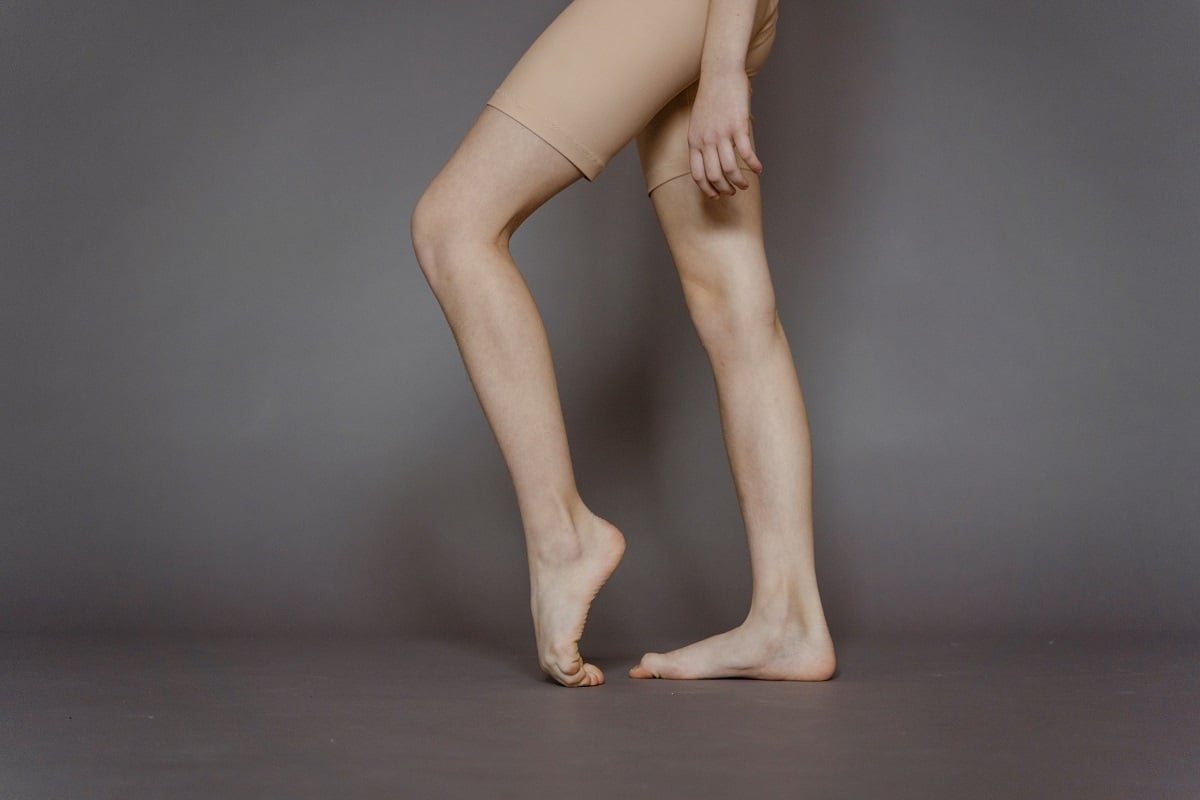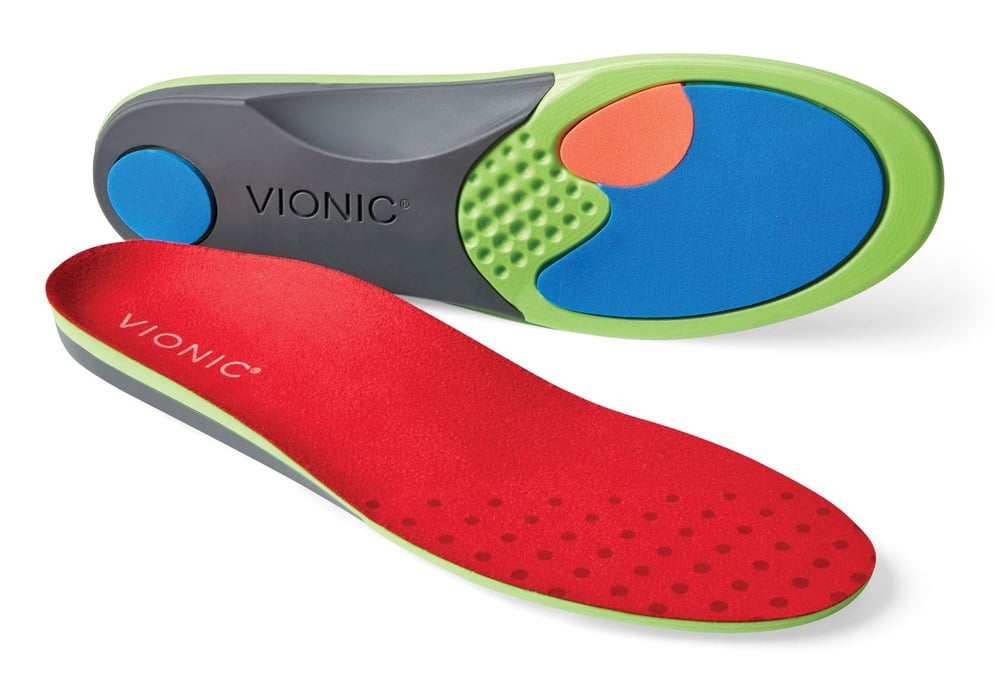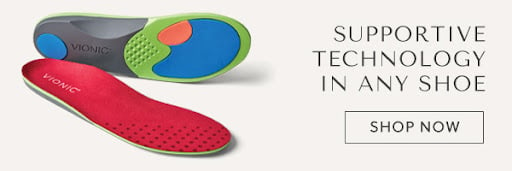
Written by: Brian Hoke
What is foot pronation? Essentially, pronation is the natural motion your foot makes as it transfers weight from the heel bone to the ball of the foot with each step.¹ The movement distributes the impact of your stride while absorbing shock. Everyone pronates when they walk, but it’s possible to overpronate or underpronate, which can be a concern. This blog will offer insight into the latter.
Overpronation means that the normal inward roll of the ankle joint and heel region are excessive. This extra motion makes the foot looser and the arches of the foot begin to collapse, causing damaging tension to the plantar fascia—the long tendons that run along the bottom of the foot—and shifting the pressure to parts of the foot that are not designed to withstand these forces. Someone with a flat foot (fallen arches) is more likely to overpronate, though anyone can experience it.
If you’ve been diagnosed with this foot problem or think you could be struggling with it, you might be wondering how to correct overpronation. The podiatry pundits at Vionic are here to offer practical tips and useful guidance for remedying the issue, including custom orthotic inserts. Let’s get started.
How to Fix Overpronation: 5 Approaches
Some pronation is normal. In fact, a person with the normal amount of pronation (a healthy, natural gait) will roll their ankles slightly inward for shock absorption without losing the proper alignment in their legs, knees and hips.
However, too much rotation can create immense strain and lead to a number of other physical ailments and overuse injuries. For example, overpronation can affect your entire body’s alignment and leave you vulnerable to other injuries and conditions, like:
- Bunions
- Plantar fasciitis
- Shin splints
- Lower back pain
- Hip pain
- Stress fractures
- Knee pain and inflammation
So, how do you fix it?
The best ways to correct overpronation include:
- Doing strengthening exercises
- Stretching every day
- Wearing supportive shoes
- Using custom orthotic inserts
- Maintaining a healthy body weight
Find detailed instructions and recommendations for each approach below.
Strengthening Exercises for Overpronation and Inner Ankle Pain
Strengthening exercises can alleviate some of the strain caused by overpronation.³ When the muscles in your arches (as well as the rest of your feet) are strong enough to support your body weight, it can reduce the downward tugging motion. Try working the following moves into your daily routine.
Short Foot Raise: Start sitting down or in a standing position with your feet hip-width apart and flat on the floor. Consciously lift up and squeeze your arches without clawing your toes, then release. You won’t be able to see much (or any) movement, but you’ll be able to feel your arches engage.
Heel Raise: Start in a standing position with your feet hip-width apart. Squeeze your arches, then slowly lift your heels, and lower back down.
Demi Plié: Start in a standing position with your legs touching, your heels together, and your feet should be turned outward. Bend your knees slowly while keeping your feet flat on the floor. Go as far down as you can, hold for a beat, then return to the starting position.
Foot Roll: Start in a standing position with your feet hip-width apart. Roll your body weight to the outer edges of your feet and hold the position. After a few seconds, return to the starting position.
We recommend doing at least 10 reps of each move every day, though you might have to start with a few and work your way. A physical therapist can also help you strengthen your arches and recommend different at-home overpronation exercises.

Daily Stretching for Overpronation and Ankle Pain Inside of Foot
Stretching on a daily basis may also be beneficial. Performing various moves can reduce tightness and alleviate strain on the ligaments throughout your feet and legs. Try working the following stretches into your routine.
Calf Muscle Stretch
Facing a wall, start in a standing position with your feet hip-width apart and your hands against the wall. Shift your weight to the outside of your feet and squeeze your arches. This will protect your bare foot from overpronation as you stretch the Achilles’ tendon and calf muscle.
Next, tilt your upper body forward and move one leg about 20 inches back while keeping both heels flat on the floor. Hold the position for about 10 seconds, then switch to the other side and repeat.
Plantar Fascia Stretch
Start in a sitting position with one foot placed on the opposite knee. Holding your heel with your opposite hand and your toes with the other, gently pull the toes upward toward the top of your foot. Hold for about ten seconds, then switch to the other side.
We recommend going through each movement at least once every day. You can perform these stretches before or after the strengthening exercises.
Supportive Footwear for Overpronation
Supportive footwear can make a world of difference for overpronation. When we say supportive, we’re mostly referring to arch support, as this prevents the ankle from rolling downward and helps keep the foot in a neutral position. Proper arch support is also important because it cushions your feet, which aren’t designed for walking on the hard surfaces that characterize modern society. They can also help promote proper body and foot alignment.
Additionally, you’ll want to look for an overpronation shoe with adequate stability. When your feet aren’t stable, your body tends to overcorrect by putting weight on areas that may not be able to handle the pressure.
Made with plantar fasciitis, Achilles tendonitis, and overpronation in mind, the orthotic footwear from Vionic can provide relief from various foot conditions and help alleviate foot pain. Each pair features our exclusive Vio-Motion Support technology with arch support, motion-control, and heel stability built right into the soles. Plus, our performance and recovery shoes offer an array of attractive, fashionable styles for men and women so that you have a supportive pair of motion control shoes for any occasion that life brings your way.
What’s more, our sturdy rubber outsoles are designed to absorb shock and reduce impact on your ankles, knees, and hips. When you slip into a pair of Vionic stability shoes, you can count on a comfortable stride and a healthy, neutral gait.
Over-the-Counter Orthotic Inserts for Overpronation
If you’re worried that dealing with overpronation means you have to swap out your favorite shoes for a medically designed pair, we have good news for you. You may be able to hang on to the shoes you love by grabbing a few over-the-counter orthotic inserts.
Orthotics are another great option for managing overpronation as they allow you to wear otherwise unsupportive shoes without contributing to a worsened foot condition. You can get custom foot orthoses from a podiatrist, but research studies have shown that over-the-counter inserts work just as well for lots of folks.
Vionic carries biomechanically engineered insoles for men and women with the perfect level of arch support and under-foot contact. Whether you go with our Active Series, Relief Series, SlimFits, or 3/4 Insoles, you can bet your feet will feel the difference right away. Vionic orthotics are ideal for athletes, people who work on their feet, professionals, active parents, and everyone in between.
Maintaining a Healthy Body Weight
Obesity is associated with an increased risk of overpronation and heel pain caused by plantar fasciitis.⁴ While it’s not the only factor at play, maintaining a healthy body weight might alleviate some of the strain on your inner ankles and arches, allowing you to walk with a more neutral gait.
If you think your weight is a contributing factor to your overpronation or if you’re simply interested in maintaining a healthy body weight as a preventative measure, here are a few healthy choices you can make:
- Eat healthy foods, like fruits, vegetables, and whole grains
- Drink plenty of water
- Exercise daily
- Get plenty of sleep
When Should You See a Podiatrist for Overpronation?
Overpronation doesn’t always require medical intervention. For many individuals, strengthening the arches, performing daily stretches, wearing proper motion control shoes, and maintaining a healthy weight go a long way in remedying the issue.
However, if you’re suffering from ongoing foot pain, it’s always wise to see a professional. A podiatrist or orthopedic foot specialist can check your gait, examine your footprint, potentially X-ray your feet, and make personalized recommendations for your treatment options.
Where to Buy the Best Shoes for Overpronation
If you’re looking for shoes to correct a pronated foot, plantar fasciitis, Achilles tendonitis, or another foot problem, you’ve come to the right place. Any of these issues can cause your feet to ache, which can in turn cause a number of inconveniences that can interfere with your day to day activities and keep you from living your life to the fullest.
Fortunately, Vionic is here to save the day. Whereas most regular shoes aren’t designed to give your feet the comfort and support they really need, Vionic’s footwear is designed by podiatrists and thoughtfully engineered to give the sort of incredible arch support, motion control, stability, and shock absorption that keeps you and your feet happy and healthy.
Not only are our styles comfortable and potentially corrective, but they’re also incredibly stylish. In addition to orthotic shoes for men and women, we carry a line of supportive orthotics inserts so that every shoe you own can have that Vionic support. Order yours today!
About the Author:
Specializing in orthopedic and sports physical therapy, Brian Hoke, DPT, SCS, has a particular interest in the biomechanical factors influencing lower limb rehabilitation. He is the owner of Atlantic Physical Therapy, a private practice in Virginia Beach, VA.
Brian is a board-certified Clinical Specialist in Sports Physical Therapy, a distinction achieved by fewer than 600 physical therapists in the U.S. He works with athletes of all levels—from recreational runners to elite professional and Olympic athletes. He has contributed chapters to two textbooks on the treatment of running injuries.
Brian is an avid educator, lecturing extensively in the U.S. and internationally. Since 1985, he has been a faculty member of the popular continuing medical education seminar, “When the Feet Hit the Ground, Everything Changes.” He co-developed and has taught the “Take the Next Step” course since 1990. In addition, he has been an adjunct faculty member of physical therapy programs at Old Dominion University and Touro College on Long Island, NY.
Brian’s expertise in sports physical therapy is a particular asset toVionic’s athletic line of footwear. He and Phillip Vasyli have also collaborated to create afoot orthotic designed for problems with supination—when feet roll outward too much.
External sources:
- Jordi Lippe-McGraw. “The Beginner’s Guide to Pronation”. Healthline. Updated on March 8, 2019,https://www.healthline.com/health/beginners-guide-to-pronation
- Jenna Fletcher. “Pronation and overpronation”. Medical News Today. December 22, 2017,https://www.medicalnewstoday.com/articles/320383#overview
- Luba Lee. “How to Fix Pronated Feet”. Wiki How. March 29, 2019, https://www.wikihow.com/Fix-Pronated-Feet
- Irving, Damien B et al. “Obesity and pronated foot type may increase the risk of chronic plantar heel pain: a matched case-control study.”BMC musculoskeletal disordersvol. 8 41. 17 May. 2007, doi:10.1186/1471-2474-8-41 https://www.researchgate.net/publication/6325324_Obesity_and_pronated_foot_type_may_increase_the_risk_of_chronic_plantar_heel_pain_A_matched_case-control_study
- Sulowska, Iwona et al. “The Influence of Plantar Short Foot Muscle Exercises on Foot Posture and Fundamental Movement Patterns in Long-Distance Runners, a Non-Randomized, Non-Blinded Clinical Trial.”PloS onevol. 11,6 e0157917. 23 Jun. 2016, doi:10.1371/journal.pone.0157917 https://www.ncbi.nlm.nih.gov/pmc/articles/PMC4918976/
- “Exercises to help prevent plantar fasciitis”. Mayo Clinic. https://www.mayoclinic.org/diseases-conditions/plantar-fasciitis/multimedia/foot-stretches-to-prevent-plantar-fasciitis/img-20008230
- “Tips to Maintain a Healthy Weight.” Revere Health. 22 July 2019. https://reverehealth.com/live-better/tips-to-maintain-a-healthy-weight/


Paul Cook
Thanks for this article.